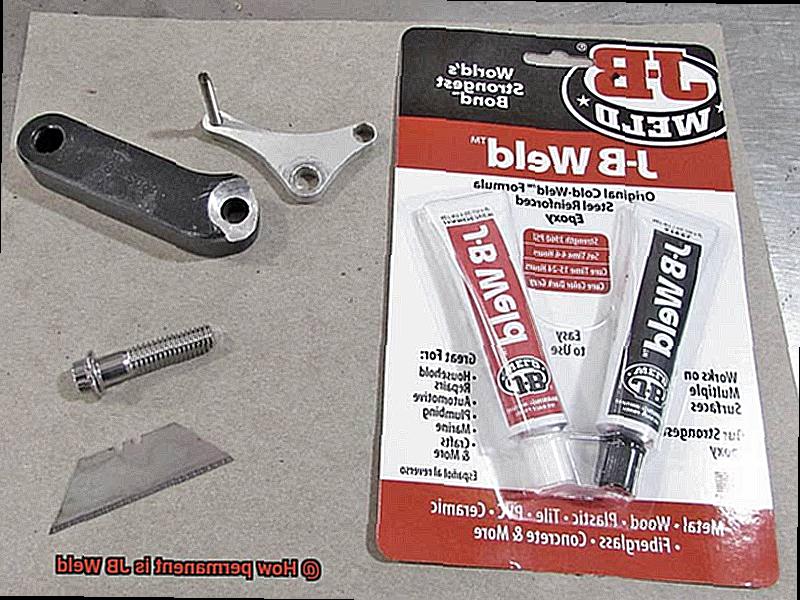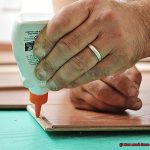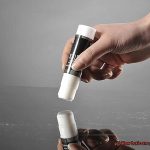When it comes to fixing things, JB Weld is the real deal. This two-part epoxy adhesive has earned a reputation for being super strong, making it a favorite among DIY enthusiasts, handy folks, and even professionals in all sorts of industries. But just how long-lasting is this stuff? Let’s dive into the world of unyielding bonds and discover what makes JB Weld a staple in toolboxes around the globe.
At first glance, JB Weld might seem like any other epoxy adhesive you’ve seen. But this bad boy is different. It’s made with a special blend of resins and hardeners that takes repairs to a whole new level. Whether you’re welding metals or bonding different materials under extreme conditions, JB Weld is all about providing permanent solutions that go above and beyond your average glue.
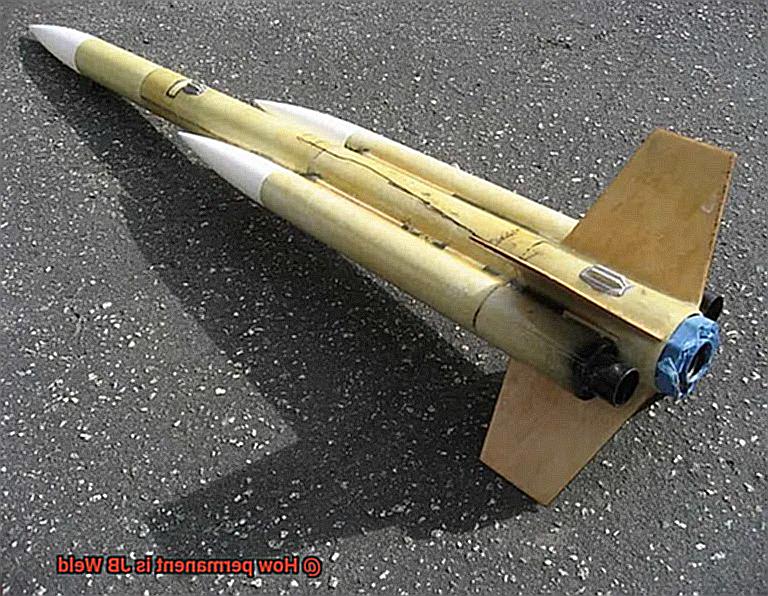
With its exceptional strength and resilience, JB Weld forms an industrial-strength bond that can handle anything life throws at it – from vibrations to crazy temperatures. It doesn’t shrink, crack, or break under pressure. So when you need repairs that will last a lifetime (or longer), JB Weld is your go-to choice.
But here’s the best part – JB Weld isn’t picky. It sticks to pretty much anything: metals, wood, plastic, ceramic – you name it. That’s why it’s trusted by professionals in automotive, plumbing, construction, and more. From fixing engine blocks to resurrecting broken tools or saving shattered masterpieces, JB Weld can handle just about any job that requires a permanent fix.
As we venture deeper into the world of JB Weld, get ready for some real-life stories, expert opinions, and scientific evaluations that prove its unwavering bond. We’ll also tackle any limitations you should know about and give you some tips for using JB Weld on your own projects.
So if you’re tired of temporary fixes and want a solution that stands the test of time, JB Weld is your knight in shining armor. Join us on this enlightening journey through its incredible strength, endless applications, and the true permanence that has made JB Weld a legendary name in the adhesive realm.
What is JB Weld?
Contents
In the realm of adhesive solutions, one brand reigns supreme for its exceptional strength, unwavering durability, and unparalleled versatility – JB Weld. Born in the 1960s as a revolutionary fix for cast iron engine blocks, JB Weld has since transformed into the adhesive of choice for countless DIY enthusiasts, mechanics, plumbers, and artists alike. Join us as we delve into the extraordinary world of JB Weld, exploring its key features, wide-ranging applications, and expert tips for achieving optimal results.
Key Features:
At the heart of JB Weld lies its two-component formula – a resin and a hardener – that when expertly blended in equal parts, create an indomitable adhesive bond. This bond defies the harshest conditions, exhibiting remarkable resistance to heat, pressure, chemicals, and even water. Imagine possessing a glue that can withstand the most extreme challenges. Moreover, JB Weld’s versatility knows no bounds as it effortlessly adheres to a multitude of surfaces including metals like steel and aluminum, plastics, ceramics, and wood.
Applications:
JB Weld is truly a panacea for all your repair needs. From mending fractures in engine blocks to patching up ruptured pipes or restoring broken sculptures to their former glory, this adhesive is your steadfast companion. Once applied and allowed to cure, JB Weld transforms into an unwavering material that stands the test of time. Whether you’re fixing your vehicle, sealing leaks around the house, or crafting an artistic masterpiece, JB Weld is your go-to solution.
Tips for Optimal Results:
To harness the full potential of JB Weld’s bonding strength, meticulous surface preparation is paramount. Ensure that the surfaces are meticulously clean, impeccably dry, and devoid of any greasy residues or contaminants. Heighten the bond strength by gently roughening the surfaces with sandpaper prior to application. Furthermore, exercise patience and allow JB Weld to cure for a minimum of 24 hours to unlock its unrivaled potency.
What Does Permanence Mean for JB Weld?
When it comes to glue, we all want something that can withstand the test of time and hold up under pressure, and JB Weld delivers on both fronts.
Let’s delve into the concept of permanence as it relates to JB Weld and why this adhesive is truly in a league of its own. First and foremost, JB Weld is a two-part epoxy adhesive that consists of a resin and a hardener. When these two components are combined, a chemical reaction occurs, resulting in a bond that is unparalleled in strength and durability.
The bond created by JB Weld is not your ordinary glue bond. It is robust, resilient, and built to last. Whether you’re repairing a cracked engine block or fixing a broken tool handle, JB Weld has got you covered. Its high strength allows it to withstand extreme temperatures, chemicals, vibrations, and even immense pressure.
So, what makes JB Weld so permanent? It all comes down to its unique formulation and curing process. Once the resin and hardener are mixed together, they undergo a chemical reaction that initiates the curing process. During this process, the molecules of the epoxy resin cross-link with each other, creating an incredibly strong and rigid structure.
As the curing process continues over time, the bond created by JB Weld reaches its maximum strength. And once it’s fully cured, this adhesive becomes impervious to moisture, heat, solvents, and many other factors that can compromise or degrade other types of adhesives. In essence, JB Weld becomes a permanent fixture in your repairs or projects.
However, it is important to note that while JB Weld provides an exceptionally strong and durable bond, its permanence may be affected by certain factors. Extreme temperatures, constant exposure to harsh chemicals or solvents, or excessive stress can potentially weaken or break the bond created by JB Weld over time. In such cases, it may be necessary to reapply or reinforce the adhesive to ensure continued longevity and security.
To maximize the permanence of JB Weld, proper surface preparation and application techniques are crucial. Thoroughly cleaning and roughening the surfaces you’ll be bonding ensures optimal adhesion. Additionally, following the instructions carefully and allowing sufficient curing time will help to achieve the best results.
Advantages of Using JB Weld
When it comes to glue, JB Weld is not your average Joe. This superhero adhesive has gained a loyal following among DIY enthusiasts, professionals, and hobbyists for its exceptional bond strength, versatility, and ease of use. In this blog post, we’ll explore the advantages of using JB Weld and why it should be your go-to solution for all your bonding needs.
High Bond Strength:
With JB Weld, you can say goodbye to weak bonds that crumble under pressure. This mighty adhesive creates a bond so strong and durable that it can withstand high pressure, vibrations, and extreme temperatures. Whether you’re fixing a broken metal bracket or repairing a cracked plastic pipe, JB Weld will provide a rock-solid bond that stands the test of time.
Versatility:
JB Weld is like a chameleon in the adhesive world. It can bond to a wide range of materials, including metal, wood, ceramic, plastic, and more. This versatility makes it the ultimate adhesive for various repair projects around the house or workshop. From fixing broken tools to repairing household items and even tackling automotive repairs, JB Weld is your all-in-one solution.
Easy to Use:
No need to be a glue expert to use JB Weld. Its user-friendly application process makes it accessible to DIYers of all skill levels. Simply mix the resin and hardener in equal parts, apply it to the surfaces you want to bond, and let it cure. Within hours, you’ll have a strong bond that’s ready for action. The simplicity of using JB Weld allows you to confidently tackle any bonding project without worrying about complicated instructions or techniques.
Heat and Chemical Resistance:
JB Weld is like a flame-retardant suit for your repairs. It exhibits excellent resistance to heat and chemicals, making it ideal for applications where exposure to extreme temperatures or corrosive substances is expected. Whether you’re fixing an exhaust manifold or sealing a pipe joint, JB Weld can handle the heat. Its resistance to fuels, oils, acids, and solvents ensures that your bond remains intact even in harsh conditions.
Cost-Effective Solution:
Why waste time and money on temporary fixes when you can have a permanent solution? JB Weld’s long-lasting bond eliminates the need for frequent repairs or replacements, saving you both time and money in the long run. By investing in JB Weld, you’ll be reaping the benefits for years to come. Its durability and reliability make it a cost-effective choice that provides peace of mind.
Wide Range of Products:
JB Weld understands that different projects require different solutions. That’s why they offer a wide range of products tailored to specific needs and applications. Whether you need a quick-setting adhesive for emergency repairs or a high-temperature epoxy for automotive repairs, JB Weld has got you covered. Their diverse product line ensures that you can find the perfect adhesive for any bonding challenge you encounter.
Preparing Surfaces for Bonding with JB Weld
Well, fear not because JB Weld is here to save the day. This superhero adhesive is renowned for its extraordinary bond strength and versatility, making it the ultimate solution for all your bonding needs. But before you embark on your next project, it’s crucial to understand how to properly prepare the surfaces for bonding with JB Weld to ensure a bond that stands the test of time.
First and foremost, cleanliness is paramount. You must ensure that the surfaces you’re bonding are completely free from any dirt, grease, or oil that could hinder the effectiveness of the adhesive. Use a mild detergent or solvent to meticulously clean the surfaces, but always check the manufacturer’s recommendations to ensure compatibility with your specific materials. After all, nobody wants a glue disaster ruining their hard work.
Once your surfaces are squeaky clean, it’s time to roughen things up a bit. This step is absolutely crucial for enhancing adhesion. Grab some fine-grit sandpaper or a wire brush and give those surfaces a good sanding. The goal here is to create a rough texture that allows for mechanical interlocking between JB Weld and the materials being bonded. It’s like creating an ironclad grip for your adhesive.
Now that your surfaces are pristine and roughened, it’s time to eliminate any loose particles or debris. Blow some compressed air or use a clean brush to ensure a surface that is impeccably clean and free from any obstructions. We want nothing standing in the way of that perfect bond.
Moisture is not our ally when it comes to bonding with JB Weld. It can disrupt the curing process and weaken the bond strength. So, make sure your surfaces are completely dry before applying the adhesive. Allow them to air dry thoroughly or give them a thorough wipe with a clean cloth or paper towel.
In certain cases, especially when dealing with porous materials like wood or concrete, using a primer or sealer before applying JB Weld can work wonders. A primer can seal the pores of the material and provide a more uniform bonding surface, thus enhancing adhesion. Just make sure to choose a primer that is compatible with both your materials and JB Weld. We want a match made in adhesive heaven.
And finally, always heed the instructions provided by the manufacturer. Different applications may require specific preparation techniques or additional steps, so it’s crucial to read and understand those instructions thoroughly. We don’t want any surprises when it comes to our adhesive adventures.
Applying and Curing JB Weld
Enter JB Weld, the superhero adhesive with extraordinary bond strength. But before you dive into your project, it’s crucial to understand how to properly apply and cure JB Weld for a strong and permanent bond.
The first step is surface preparation. Don’t skip this crucial step. Clean the surfaces that will be bonded with a degreaser or alcohol-based cleaner to remove any dirt, grease, or oil that could interfere with the bonding process. A clean surface is key to a strong bond.
After cleaning, roughen up the surfaces to create a better grip for the JB Weld. Use sandpaper or a file to create more surface area for the adhesive to adhere to, ensuring a stronger bond.
Now it’s time to mix the two components of JB Weld together. Typically, JB Weld comes in two tubes – one with resin and the other with hardener. Read and follow the instructions on the packaging for the correct ratio of resin to hardener. Squeeze equal amounts of resin and hardener onto a clean surface and thoroughly mix them together with a disposable stirring stick or small spatula. Keep mixing until the color is consistent throughout, indicating that the components are fully blended.
With JB Weld mixed, it’s time to apply it to the prepared surfaces. Use a putty knife or similar tool to apply a thin, even layer of JB Weld. Make sure to spread it evenly over the entire surface area that needs bonding.
Once applied, clamp or hold the bonded pieces firmly together until the adhesive sets and cures. The curing time can vary depending on temperature and humidity. Generally, JB Weld takes around 4-6 hours to set and 15-24 hours to fully cure. Avoid any movement or disturbance during this time that could disrupt the bond.
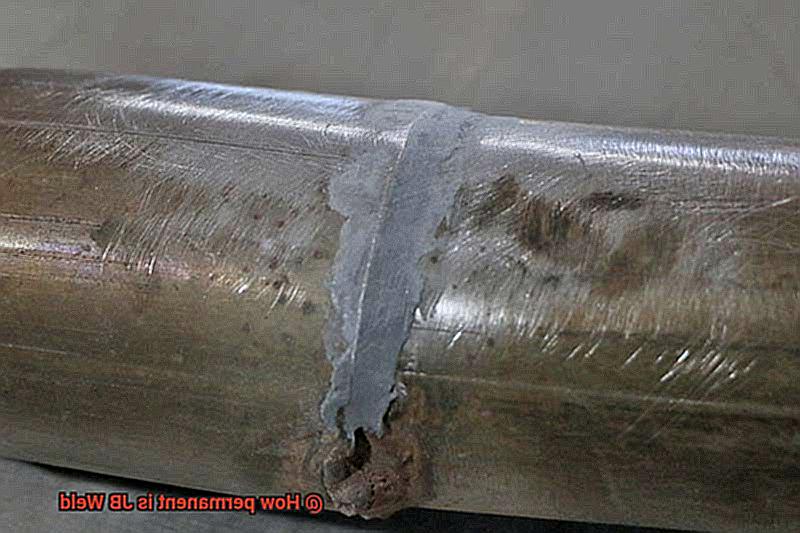
Once cured, JB Weld forms a strong and permanent bond. It can withstand high temperatures, water exposure, and various chemicals, making it suitable for a wide range of applications. However, keep in mind that the strength and permanence of the bond can also depend on factors like surface preparation, application technique, and the materials being bonded.
Factors that Affect the Permanence of the Bond
The permanence of a bond is influenced by several factors that must be carefully considered during the bonding process. Surface preparation is a crucial step in achieving a strong and long-lasting bond. Surfaces should be thoroughly cleaned to remove any dirt, grease, or debris that could hinder the adhesive’s grip. Additionally, roughening the surfaces with sandpaper or an abrasive pad provides more surface area for the adhesive to grab onto, enhancing the bond’s strength.
Temperature is another critical factor that affects bond permanence. Extreme temperatures can compromise the curing process of the adhesive. It is essential to follow the manufacturer’s instructions regarding temperature requirements to ensure optimal performance. If it’s too hot or too cold, the bond may become brittle or weaken altogether.
Achieving the correct mixing ratio of the adhesive components is crucial for a permanent bond. Accurate measurement and thorough mixing are necessary to ensure an optimal cure and a strong bond. Deviating from the recommended ratio can result in an incomplete cure, leading to a weaker bond.
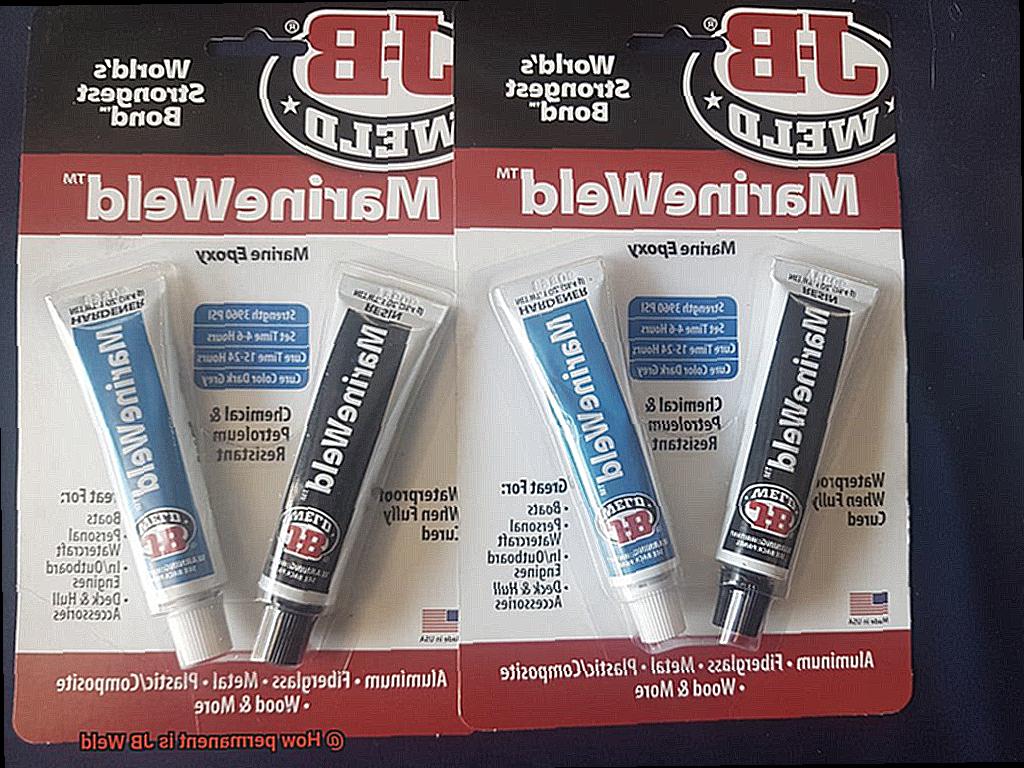
Patience is key when it comes to curing time. Factors like temperature and humidity can influence the curing time of the adhesive. Rushing the process can compromise the bond’s permanence, so it’s important to follow the instructions and allow sufficient time for complete curing before subjecting the bond to stress or load.
The type of materials being bonded also plays a role in determining bond permanence. Some materials provide excellent bonding surfaces for certain adhesives, while others may require additional surface treatment or specific adhesives to achieve a permanent bond. It’s important to consider the substrate material and choose an appropriate adhesive accordingly.
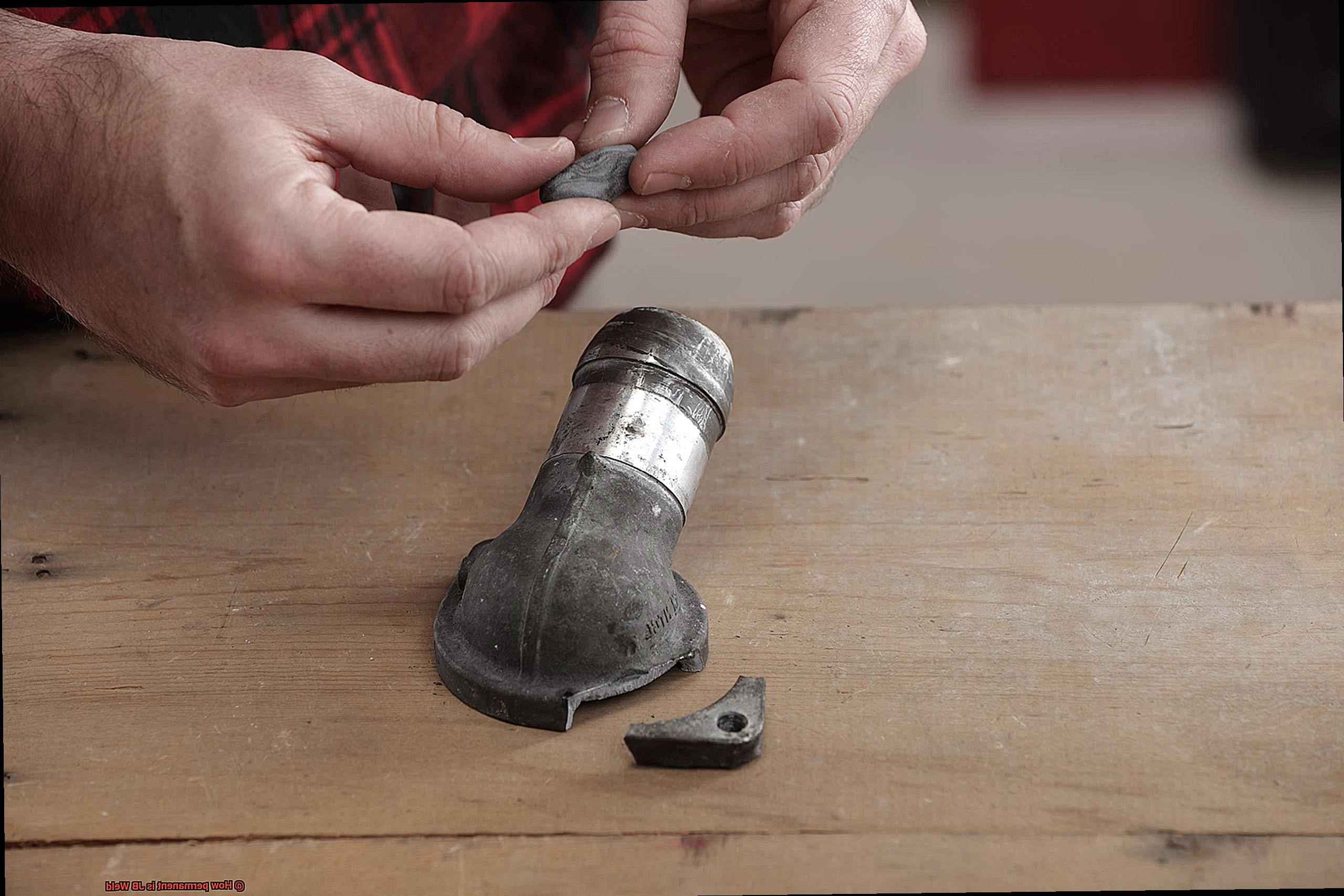
Finally, environmental exposure can impact the longevity of the bond. Factors such as moisture, UV radiation, chemicals, and temperature fluctuations can all affect the adhesive’s performance over time. It’s essential to consider where the bonded object will be exposed and select an adhesive that can withstand those conditions.
Removing or Separating JB Weld Bonds
Removing or Separating JB Weld Bonds
JB Weld is known for its strong and durable bonds, but sometimes you need to break free from its grip. Whether you made a mistake or simply need to separate two surfaces, there are methods you can use to remove or separate those stubborn JB Weld bonds. So grab your tools and get ready to embark on a journey of glue liberation.
Method 1: Heat it up.
One effective method for loosening JB Weld bonds is by applying heat. This technique involves softening the epoxy, making it easier to break apart. You can use a heat gun or even a trusty hairdryer on a high setting. However, it’s important not to overdo it and damage the surrounding materials. Think of it as gently warming up the bond, not turning it into a full-blown inferno. By carefully applying heat, you can weaken the bond and facilitate its separation.
Method 2: Solvents to the rescue.
Another option for removing JB Weld bonds is to use solvents. Acetone is a popular choice for this task, as it can dissolve epoxy adhesives like JB Weld. Simply apply acetone to the bonded area using a cloth or sponge, and let it soak in for a while. The solvent will work its magic by breaking down the adhesive, allowing you to gently pry apart the bond with a putty knife or flathead screwdriver. It’s like giving your glue a spa day – relaxation and separation all in one.
Method 3: Channel your inner handyman.
Sometimes, brute force is required to break free from JB Weld’s grasp. Carefully prying or chiseling away at the bond might just do the trick. However, it’s essential to proceed with caution to avoid causing collateral damage to your precious surfaces. By using controlled force and precise movements, you can gradually separate the bonded materials and free yourself from the grip of JB Weld.
It’s important to note that removing or separating JB Weld bonds can be a challenging task. The strength and durability of this adhesive make it resistant to easy removal. If all else fails, consider seeking professional help or exploring alternative methods such as cutting or grinding away the bonded area. However, these methods can be more invasive and may cause damage, so use them as a last resort.
Before you embark on your journey to free your project from its JB Weld prison, remember to work in a well-ventilated area and protect yourself with gloves and eyewear. Some solvents and heat sources can be hazardous if not used properly. Safety should always come first when attempting to remove or separate JB Weld bonds.
bzOqV44xA_0″ >
Also Read: Will JB Weld Work On PVC Pipes? – The Welding Guru
Conclusion
JB Weld, the renowned epoxy adhesive, is known for its exceptional strength and durability. When it comes to permanence, JB Weld stands tall as a reliable solution for various repairs. Its bond is not easily broken, making it ideal for fixing metal, wood, plastic, and more. Whether you’re patching up a cracked engine block or reattaching a broken handle, JB Weld’s steadfastness ensures that your repair will last.
But what exactly makes JB Weld so permanent? It’s all in the formulation. This remarkable adhesive consists of two components – a resin and a hardener – that when mixed together create an incredibly strong bond. Once applied and cured, JB Weld becomes rock-solid, resistant to heat, chemicals, and even vibrations.
Imagine your car’s exhaust manifold cracking under extreme conditions. With JB Weld in hand, you can confidently mend the damage with ease. The adhesive’s ability to withstand high temperatures up to 550 degrees Fahrenheit ensures that your repair will hold up under intense heat without weakening or breaking down.
Not only does JB Weld excel in extreme temperatures, but it also triumphs over harsh chemicals. From gasoline to oil and even acids, this adhesive remains unaffected by corrosive substances that could compromise weaker adhesives. So whether you’re sealing a leaky gas tank or repairing a chemical container, rest assured that JB Weld will maintain its integrity.
Furthermore, JB Weld’s resistance to vibrations sets it apart from other adhesives on the market. It can endure constant shaking and movement without losing its grip or loosening over time. This feature makes it an excellent choice for repairing machinery or securing loose parts that are prone to frequent vibrations.
In conclusion, if you’re seeking a permanent solution for your repair needs, look no further than JB Weld. Its unwavering strength combined with its ability to withstand extreme temperatures, harsh chemicals, and constant vibrations make it the go-to choice for both professionals and DIY enthusiasts.

